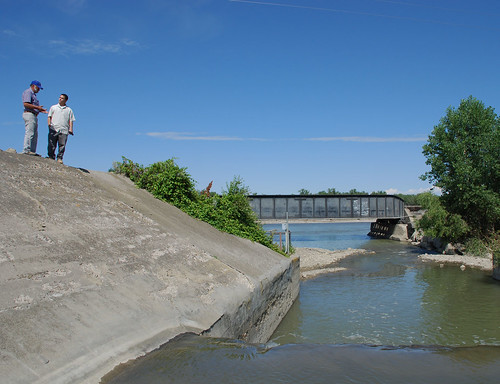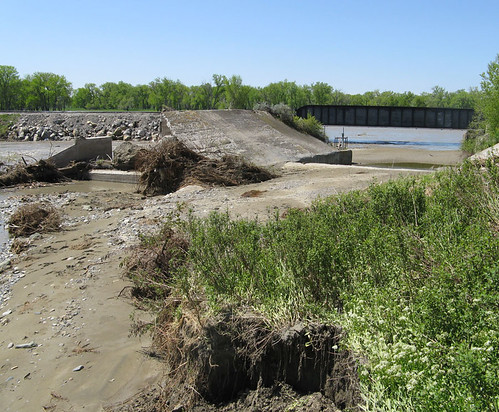
Only a month after spring floods ravaged the Huntley Irrigation Canal near Huntley, Montana, and temporarily halted irrigation, over 30,000 acres of crops are receiving water.
According to Huntley Project Irrigation District Manager Dale Bilyeu, about $17 million of barley, corn and sugar beets would’ve gone dry if irrigation had not been quickly restored by USDA’s Natural Resources Conservation Service (NRCS). Hay ground and cattle pasture would have suffered as well.
June floods washed out the irrigation canal, causing irrigation water to divert into the already sediment-laden Pryor Creek and, ultimately, the Yellowstone River. Flooding also threatened a highway bridge between Huntley and Interstate 90, and the town of Huntley itself.
When the flood waters subsided, NRCS signed an agreement with the Huntley Project Irrigation District to provide $282,000 toward repairs through the agency’s Emergency Watershed Protection (EWP) program.
The repairs included reestablishing the canal section, returning Pryor Creek to its channel, establishing erosion control measures and stabilizing the irrigation canal conduit. In short time, much-needed irrigation water was flowing to crops again.
The EWP program helps landowners implement measures to stabilize damaged sites, protect infrastructure and prevent future damages from flood water. The Huntley Project Irrigation District is providing the remaining $78,000 needed for the project.

“The completion of this project helped avoid catastrophic crop failure and also helped to protect the town of Huntley,” says Nick Vira, NRCS district conservationist in Billings.
“The project made economic sense when you consider that for every dollar of crop produced, three dollars comes back to the community.”
“If it hadn’t been for NRCS, we’d still be waiting for repairs,” Irrigation District Manager Bilyeu says. “It’s great how fast the engineers showed up and how quickly the project was completed.”
EWP funds assist local sponsors with eligible emergency measures in a timely manner. NRCS may bear up to 75 percent of the recovery costs. Project sponsors are ultimately responsible for the 25 percent local match and ongoing project maintenance. EWP projects reduce threats to life and property, are economically and environmentally defensible, and are sound in engineering.
Find out more about the Emergency Watershed Protection (EWP) Program
Check out more conservation stories on the USDA blog
Follow NRCS on Twitter
